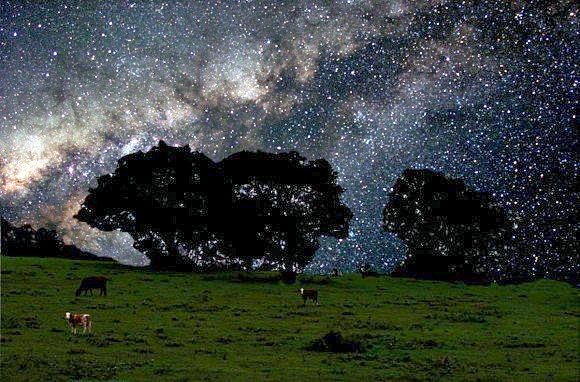|
|
Cosmology
In the beginning, there was… well, we don’t really know. One of the most prevalent misconceptions in cosmology is that the universe began as an immensely small, inconceivably dense collection of material that suddenly exploded, giving rise to space as we know it. There are a number of problems with this idea, not least of all the assumption implicit in an event termed the big “bang.” In truth, nothing “banged.” The notion of an explosion brings to mind an expanding tide of material, gradually filling the space around it; however, when our universe was born, there was no space. There was no time either. There was no vacuum. There was literally nothing. Then the universe was born. Extremely high energies during the first 10-43 seconds of its life make it very difficult for scientists to determine anything conclusive about the origin of the cosmos. Of course, if cosmologists are correct about what they believe may have happened next, it doesn’t much matter. According to the theory of inflation, at about 10-36 seconds, the universe underwent a period of exponential expansion. In a matter of a few thousandths of a second, space inflated by a factor of about 1078, quickly separating what were once adjoining regions by unfathomable distances and blowing up tiny quantum fluctuations in the fabric of spacetime. Inflation is an appealing theory for a number of reasons. First of all, it explains why we observe the universe to be homogeneous and isotropic on large scales – that is, it looks the same in all directions and to all observers. It also explains why the universe visually appears to be flat, rather than curved. Without inflation, a flat universe requires an extremely fine-tuned set of initial conditions; however, inflation turns this fine-tuning into a trick of scale. A familiar analogy: the ground under our feet appears to be flat (even though we know we live on a spherical planet) because we humans are so much smaller than the Earth. Likewise, the inflated universe is so enormous compared to our local field of view that it appears to be spatially flat. As the theory goes, the end of inflation gave way to a universe that looked slightly more like the one we observe today. The vacuum energy that drove inflation suddenly transformed into a different kind of energy – the kind that could create elementary particles. At this point (only 10-32 seconds after the birth of the universe), the ambient temperature was still far too hot to build atoms or molecules from these particles; but as the seconds wore on, space expanded and cooled to the point where quarks could come together and form protons and neutrons. High-energy photons continued to dart around, continually striking and exciting charged protons and electrons. So what happened next? How did this chaotic soup of matter and radiation become the vast expanse of organized structure that we see today? What’s going to happen to the universe in the future? And how do we know that this is the way the story unfolded? By Vanessa D’Amico |
